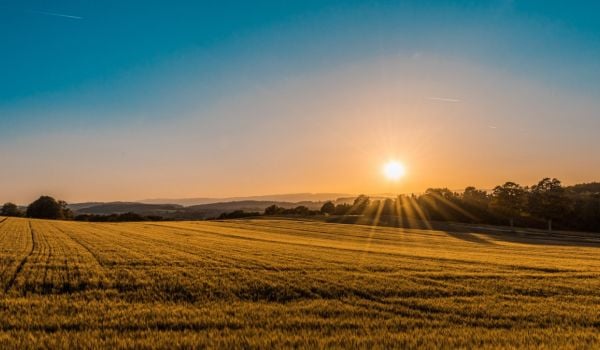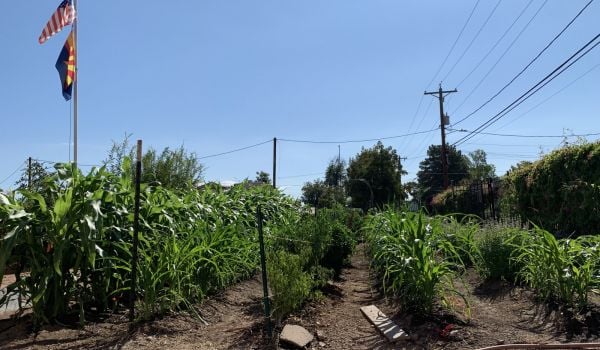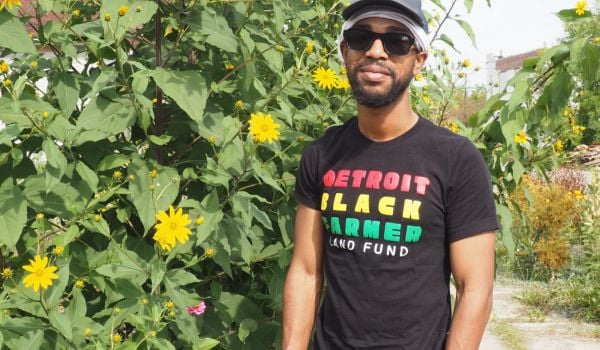From the surface it appears the community of Africatown, Alabama, fits the profile of a food desert. Many of its commercial buildings sit vacant, the once-bustling downtown has all but disappeared. And so, too, have grocery stores — residents now drive to the nearby cities of Mobile and Prichard for food shopping.
But look deeper, and you’ll find a long history of community gardening here. Decades ago, the Alabama Power Company gave residents permission to plant on its vacant plots. They began harvesting acres of crops to eat, sell, or give away to neighbors.
“When we were small, my father grew collards, turnips, mustard greens, peas, butter beans, okra, sweet potatoes, corn,” says lifelong Africatown resident Ruth Ballard, now 82. “He also kept animals: hogs, cows, goats, chickens, geese, guineas.” Community farming, she says, continues on those same plots today.
A recent $50,000 grant from Alabama Governor Kay Ivey will bolster Africatown’s strong ties to community gardening and make it more accessible to the overall community. The money, granted to the Africatown Community Development Corporation, will go toward constructing an open-air market adjacent to the 4.4 acre Jakes Lane Community Garden. According to executive director Donna Mitchell, the market will offer perishables like milk, butter and eggs, plus fresh fruit and vegetables, some of it sourced right from Jakes Lane.
Residents of Africatown can trace their history to July of 1860, when 110 men, women and children were captured in West Africa and brought to Mobile on a slave slip. The international slave trade became illegal in the United States in 1808, but Timothy Meaher, a wealthy Alabama businessman, had made a bet that he could evade authorities. Meaher secretly transferred the slaves to a riverboat and burned his ship. He was later arrested for the act, but never convicted. It marked the last known illegal shipment of slaves to the U.S.
At the end of the Civil War, formerly enslaved West Africans around Mobile, including those brought on the riverboat, founded “African Town” in an isolated area along the Mobile River. It was the earliest known town established and controlled by recent African immigrants in the United States.
The community established a governmental system based on African law and retained much of their West African culture. “They were a tight-knit community known for sharing and helping one another but reportedly had tense relations with both whites and African Americans and so largely kept to themselves,” according to a neighborhood history.
Africatown built itself into a self-sustaining community with a school, church and local businesses. That was threatened by incoming industry, which now surrounds Africatown, and development of a primary road system designed for through-traffic and access to industrial areas. The reconstruction of the Cochrane Bridge and Bay Bridge Road in the 1980s created a pronounced physical division between two Africatown neighborhoods. As for the surrounding industrial plants, a group of about 1,200 launched a lawsuit this year against a now-shuttered paper plant they say spewed hazardous chemicals into the air and local environment.
After the encroachment of roads and industry, residents say, Africatown’s population dropped, businesses left and the building stock became blighted.
Africatown Community Development Corporation was formed about 20 years ago to help revitalize the area. In 2016 the organization worked with the City of Mobile on an Africatown Community Plan, which addresses everything from affordable housing needs to attracting new business. The plan identified community gardening as an asset, with the goal of “expansion of community gardening in Africatown, a seasonal farmer’s market, and truck-based mobile markets [that] all can help increase access to affordable, fresh and healthy food especially for residents with limited transportation means.”
With that goal in mind, Mitchell spearheaded the application for this first-time grant program, made possible by the Alabama Healthy Food Financing Act passed in 2015. (Governor Ivey was a staunch supporter of the bipartisan legislation when it was passed, but funding didn’t come through until she became governor last year.) In total, the state allocated $300,000 to reduce the number of food deserts in Alabama.
Of 20 total applications, seven organizations were selected, according to Shabbir Olia, chief of Alabama Department of Economic and Community Affairs’ Community and Economic Development Division. The application process included a visit to Africatown by state officials. “We were very, very impressed with the community garden, how large it was,” Olia says.
The state worked with Africatown Community Development Corporation to secure a 10-year lease to run the outdoor market on a plot separate from Jakes Lane. Mitchell aims to open the market four days a week beginning this July. Eventually, she’d like to install arts and crafts as well as a cultural component, modeled after the French Market in New Orleans.
“We want to provide all those things that have been missing from the daily diet,” Mitchell says. “And we hope the market, and other revitalization we’re doing, will help attract families back to the community.” The organization also secured $3.58 million to establish a new welcome center and develop a tourism program. And the organization is looking to blighted lots where they could establish more community gardens, Mitchell says.
Ballard says that Africatown’s limited access to fresh food “has made a huge impact on the community… anyone who doesn’t have transportation has had to depend on someone else to get to the grocery store.” She plans to begin shopping at the open-air market this summer, with memories of her father farming the adjacent land. “It’s where our dad taught us how to pick peas and get potatoes after he dug them up,” she says. “We did so much there as a family.”
EDITOR’S NOTE: This article has been corrected to accurately reflect the leasing and ownership of the plot for the open-air market.

Emily Nonko is a social justice and solutions-oriented reporter based in Brooklyn, New York. She covers a range of topics for Next City, including arts and culture, housing, movement building and transit.
Follow Emily .(JavaScript must be enabled to view this email address)

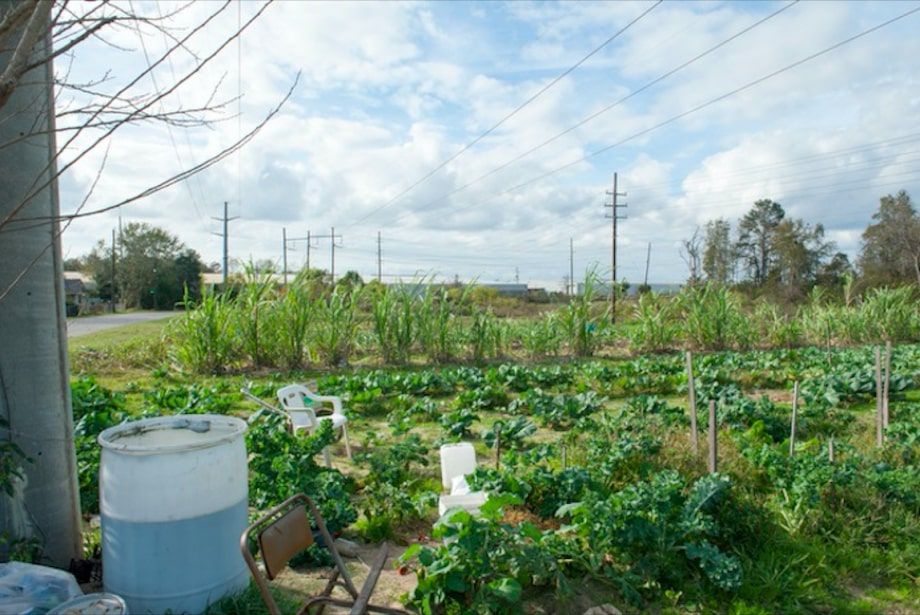

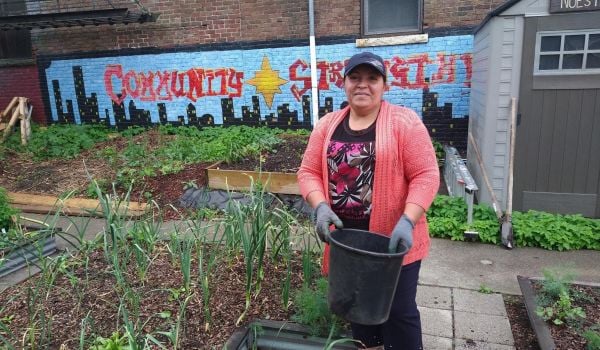
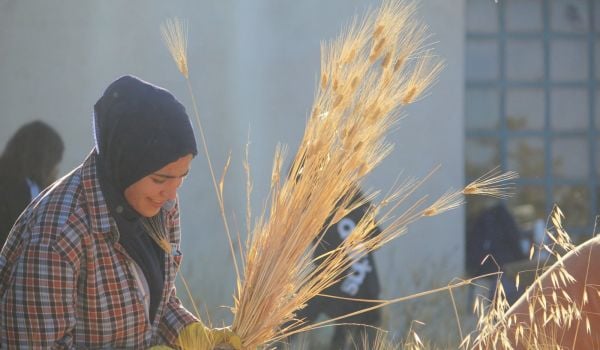

_600_350_80_s_c1.jpeg)
